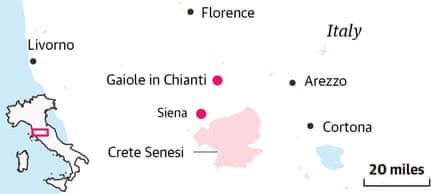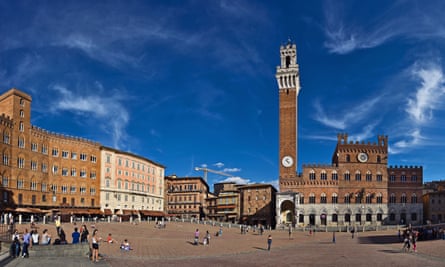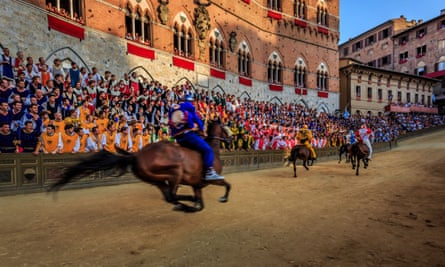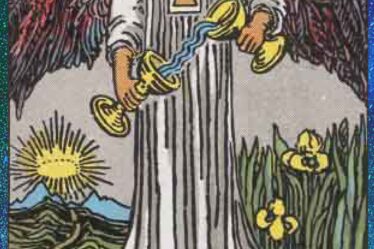
The first time I visited Tuscany in spring was on a cycling trip with friends. Early one morning, before the sun had the chance to burn off the nocturnal dampness, we set off, wearing jackets and gloves, on a circuitous route from our tiny hamlet in the Chianti hills to Siena.
By lunchtime, we were looking for suncream, amazed at the difference a few hours could make. Ostensibly, the day’s objective was a coffee in Siena’s central piazza, but the real intention was to explore the hills called the Crete Senesi, between Chianti and the Val d’Orcia. Named after creta, the blue-grey clay that gives much of this countryside its distinctive colouring, it is a part of Tuscany that could keep a cyclist or hiker entertained for a lifetime.
This is a land of wide open skies and vast panoramas, which we crisscrossed on dusty, cypress-lined gravel roads that wound over and across the undulating countryside. Green and golden fields stretched over the horizon in every direction, with nothing but farmhouses and some distant hilltop towns to break the illusion of infinite space. Every so often we would roll through a stunningly beautiful, staggeringly old town. For someone like me, just learning to speak Italian, the names were fun to say: San Giovanni d’Asso, Buonconvento, San Gimignanello.

The stony, rugged backroads meandered everywhere and nowhere, diving deep into woodland only to spit us out a few minutes later in the middle of a vineyard, where workers were attentively surveying vines for the small woolly nubs and bright green bud breaks that signal the plants’ reawakening from a long, cold winter. Neighbouring olive groves were thick with smoke as farmers burned old trimmings in preparation for the new season. We could hear the oily wood crackling and spitting in the flames.
It felt as if the countryside was alive with activity, but at the same time as if we had it to ourselves. The only road users we encountered were other cyclists or the occasional Ape, the boxy, rattly three-wheeler beloved of deliverymen, farmers and hunters up and down Italy.
After several rambling hours, we wound our way up a steep, slender road towards the imposing ramparts of Siena, rolling through the ancient gate at Porta Romana and down streets that grew narrower and darker, until suddenly Via del Porrione opened up on to the blindingly bright terracotta amphitheatre that is Piazza del Campo. More than a decade on, it remains an evocative memory.

It is also in stark contrast to my very earliest experience of Tuscany. That time, a friend and I had arrived in Florence towards the end of a month-long Interrailing trip. The tourist season was at its peak and our funds were nearing their end. Neither fact helped make a great first impression, and looking back now, almost 20 years later, the most vivid recollections I have are of long queues for crowded museums and a middling gelato that nearly bankrupted us. It’s still what I picture when I think of high summer in Tuscany.
Of course, subsequent visits softened my opinions and I have learned to appreciate Florence, but I’ve yet to really fall for it. Siena, by contrast, had me at first sight. It’s a city that charms in a hundred different ways and stays in your memory long after you’ve left, not because of any one thing, but because it’s more than the sum of its parts.
Individuality is central to the Sienese identity, and to understand the city and its inhabitants you have to appreciate the real – and imagined – differences between each neighbourhood. People here take a fondness for provincialism and turn it into an elite-level sport, one that’s played out twice each summer in the Palio horse race around the city’s central square. The race is so woven into everyday life that many of the churches still have two doors – one for humans and one for horses – because the priest has to bless the horses before a race.
Given Italy’s often tumultuous history, it’s a miracle that Siena’s 15th-century street plan is still so intact. It’s a wonder, too, that so much of its personality has been preserved along with it, sheltered inside its city walls. Siena remains unmistakably itself, the quintessential medieval city, a warren of tight thoroughfares full of shops, bakeries, fountains and restaurants that are similar without ever being the same.

At first it might all blend together, each gothic arch just like the last, but once you adjust, you notice that the lamp-post you just passed is shaped like a fish, and that the fountain over there is capped with a wolf. You walk past a rhino sitting under a tree, and pass under the watchful eyes of a porcupine, carved into stone and set high above the doorways. The vibrant flags that are draped throughout the city change colour and pattern, and little by little the city’s complex network of neighbourhoods begins to take shape.
A visit to one of the city’s contrada (district) museums, with their wonderfully bizarre collections of drappelloni, the painted banners awarded to the winning contrada after each Palio, is to me what travel should be about. To give just one example, the Contrada della Lupa (she-wolf district) has its headquarters and its museum in a building that dates from the early 16th century. It has a number of exquisite frescoes, a costume room displaying all its Palio costumes since the 1830s and, in the dramatically named Hall of Victories, all its winning banners. An unforgettable one from July 1945 depicts a fascist dragon being impaled by an allied missile, under the watchful eye of the Virgin Mary and two cherubim. And presiding over it all is an autographed photo of Giuseppe Garibaldi, dedicated to the jockey Mario Bernini, who rode the victorious horse in the 1867 Palio while the general was in attendance.
It’s not the kind of museum experience that’s likely to feature on a listicle. It’s not as impressive, or (forgive me) Instagrammable as somewhere like Florence’s Uffizi, but it’s not as packed either. Siena is full of quaint little curiosities like this, full of history and funny anecdotes that provide colour and context.
You won’t queue to enter or jostle for position while you’re in there. And in spring, when you exit, it will be on to an empty street, with the sun trying but not quite managing to penetrate the city’s deep, medieval passages. If you’re really lucky, it will be lunchtime and there’ll be a table somewhere close by with your name on it.
Il Chiostro del Carmine, a former 13th-century convent in central Siena, has doubles from €97 B&B. Colin O’Brien’s book, Giro d’Italia (£9.99), is published by Pursuit Books, available for £9.59 from guardianbookshop.com



